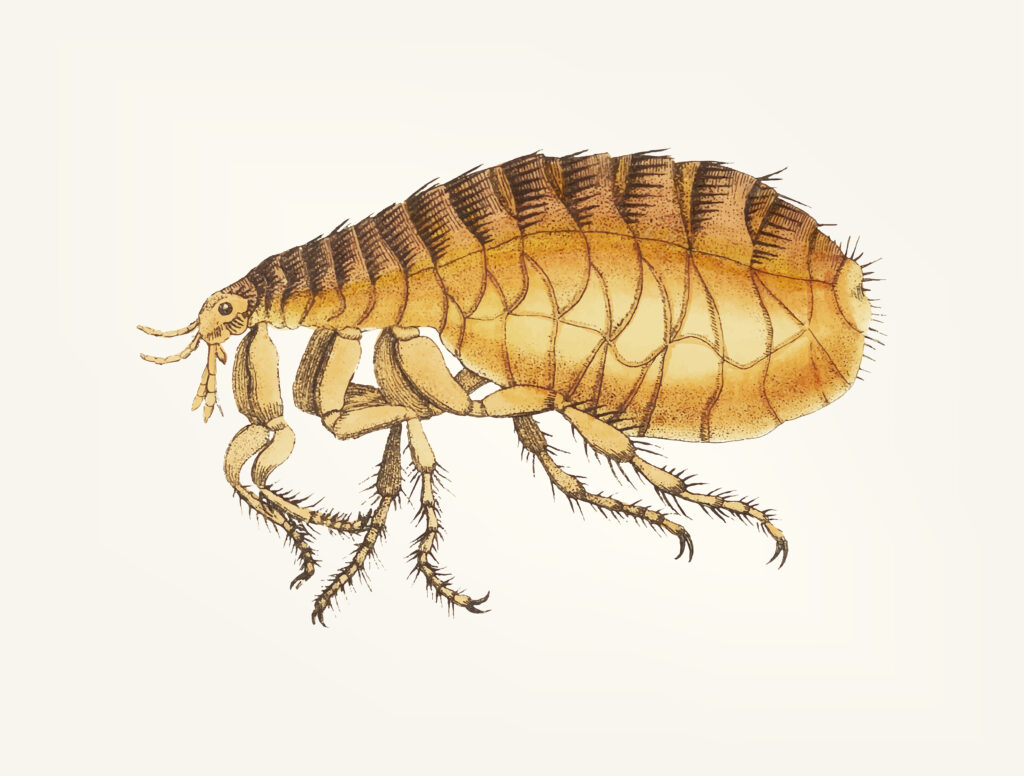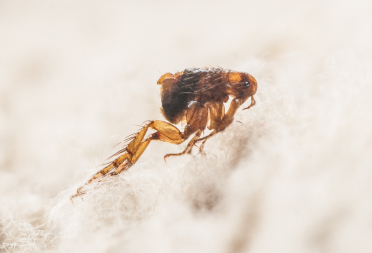Fleas are persistent parasites that can cause serious discomfort for your dog and they don’t stop with just adult fleas. Flea eggs are a hidden threat, often overlooked because of their size and appearance. Left untreated, these eggs can hatch and restart the infestation cycle, making it incredibly difficult to eliminate the problem entirely.
Understanding how to identify flea eggs on your dog, where they tend to hide, and how to remove them effectively is essential for long-term control. In this guide, we’ll walk you through what flea eggs look like, how to find them, and what steps to take for safe and thorough removal.

What Flea Eggs Look Like and Where to Find Them
Flea eggs are tiny, oval-shaped, and off-white. They can easily be mistaken for grains of salt or dandruff, making them difficult to detect without close inspection. While adult fleas stay on the host, flea eggs often fall off into the dog’s bedding, carpet, or furniture.
- Flea eggs are approximately 0.5 millimeters long
- They have a smooth, glossy surface and do not stick to fur
- Most eggs are laid on the dog’s skin but fall into the environment within a few hours
- Common areas to check include the base of the tail, belly, armpits, and inner thighs
Because flea eggs fall off easily, treating your dog is only one part of the process. A full inspection of your home is also necessary to stop the next wave of hatching.
For more details on visual identification, the article on flea eggs on dogs explains how to distinguish flea eggs from other debris on your pet.
Signs That Flea Eggs May Be Present
Spotting flea eggs directly isn’t always easy, but other symptoms often indicate their presence. If your dog has fleas, there’s a high likelihood that eggs are already in your home or on their body.
- Persistent scratching or biting at the skin
- Red or irritated patches of skin
- Flea dirt (black specks that turn red when wet) on the skin or bedding
- Visible adult fleas jumping or crawling
- Hair loss or scabbing from excessive scratching
Once these signs appear, it’s important to act quickly to prevent eggs from hatching and continuing the cycle. Remember that fleas reproduce rapidly; just one female flea can lay up to 50 eggs per day.
How to Remove Flea Eggs from Your Dog
The goal of any treatment is to not only eliminate adult fleas but to break the reproductive cycle. That means removing flea eggs is just as critical as treating visible fleas.
- Use a flea comb: Fine-toothed combs help remove fleas and eggs from the fur. Pay attention to the neck, belly, and base of the tail
- Bathe your dog: Use a vet-recommended flea shampoo to wash away eggs, larvae, and adult fleas
- Dry and clean: After bathing, dry your dog thoroughly and wash any towels, bedding, or blankets used during the process
- Vacuum regularly: Use a vacuum with a strong filter on carpets, floors, and furniture where eggs may have fallen
- Dispose of waste: Empty vacuum bags and wash bedding in hot water to kill any remaining eggs
While these steps are necessary, they may not be enough to fully eliminate an infestation. That’s why it’s important to treat both the pet and the environment simultaneously.
Why Environmental Control Is Just as Important
Because flea eggs fall off your dog and land in the environment, your home can quickly become a breeding ground. Eggs can hatch into larvae within days and mature into biting adults in less than two weeks under the right conditions.
- Vacuum all soft surfaces daily, especially under furniture and in corners
- Wash all pet bedding in hot water weekly
- Use a veterinarian-approved flea treatment for long-term protection
- Treat carpeted areas and upholstery with targeted pest solutions
- Monitor for reappearance by checking your pet and common hiding spots
A common issue homeowners face is underestimating how much of the infestation lives off the pet. Many well-intentioned people fall into the trap of treating the pet alone. The article on DIY pest control pitfalls discusses why incomplete treatment plans often lead to recurring infestations.
When to Call in a Professional
Despite your best efforts, flea infestations can be relentless. If you continue to find fleas or eggs after multiple treatments, it’s time to consider expert help. Professionals have access to stronger, targeted treatments and can assess the full extent of the problem, both on your pet and throughout your home.
- Recurring flea sightings after treatment
- Large-scale infestations in multiple rooms
- Severe allergic reactions or flea bite dermatitis in pets
- Difficulty identifying and treating all life stages of fleas
Calling in a professional ensures the infestation is treated completely, reducing the chances of recurrence and protecting your pet’s health in the long run.Flea eggs are the invisible link in the infestation cycle, and missing them can lead to repeated outbreaks. Identifying and removing them from your dog requires a careful, comprehensive approach. For thorough, safe, and effective flea control, contact United States Pest Service to ensure your home and pets are fully protected.

